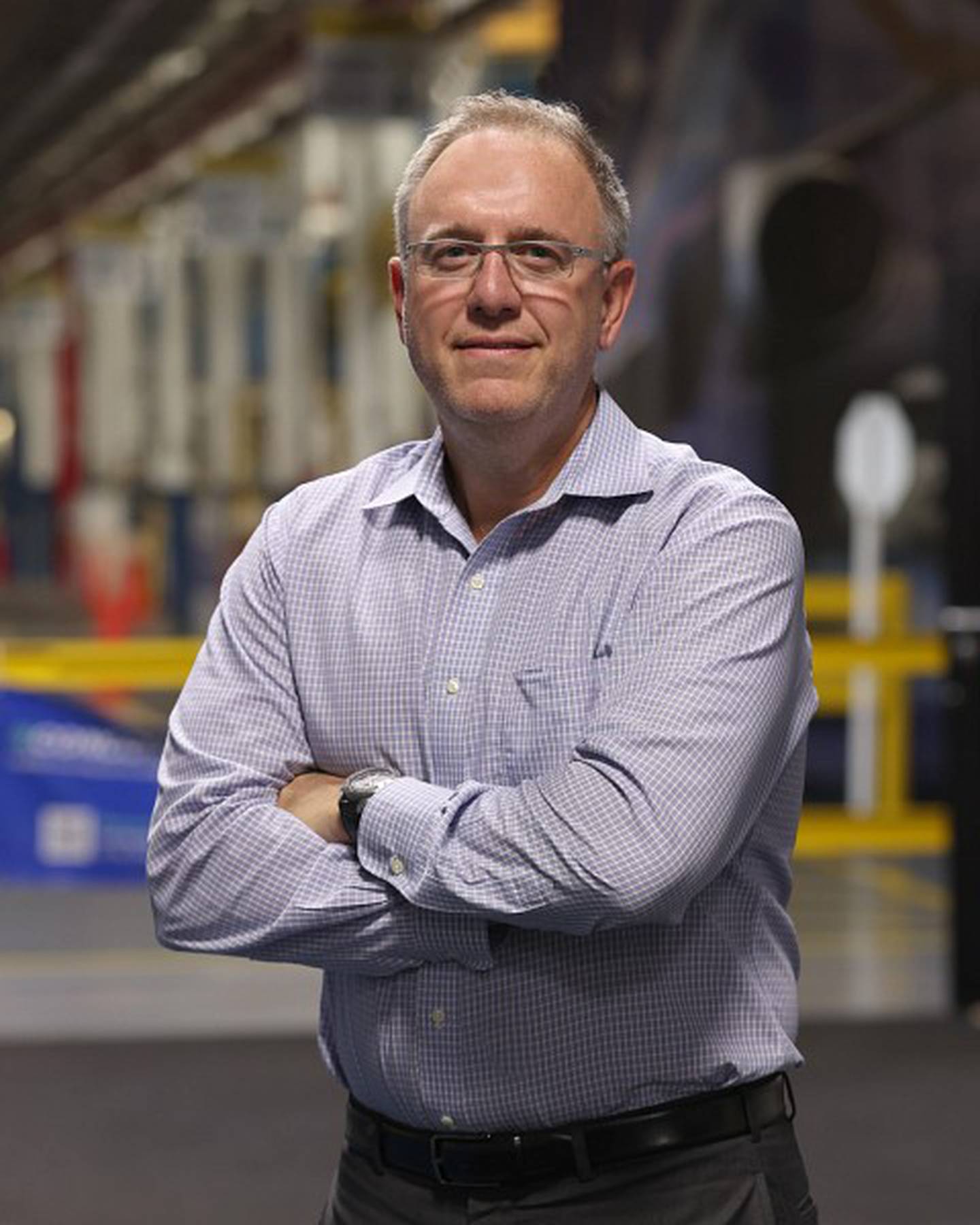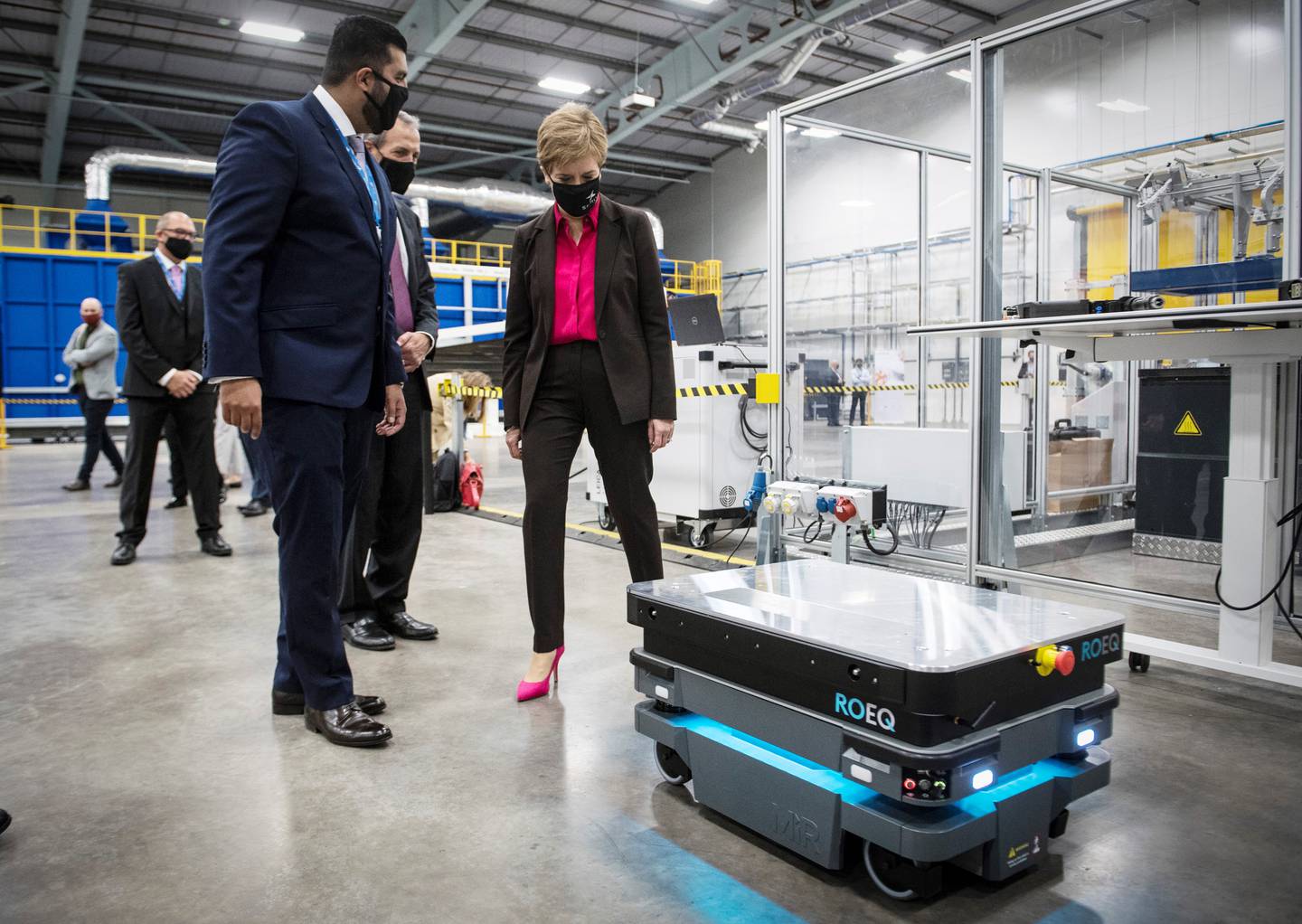WASHINGTON — Kansas-based Spirit AeroSystems, which spun off from Boeing in 2005, has long been a key manufacturer and supplier of structural components for aircraft such as Boeing’s E-7 Wedgetail and P-8 Poseidon, Northrop Grumman’s B-21 Raider, struts and nacelles for Boeing and Rolls Royce’s re-engining of the B-52 Stratofortress, and Bell’s V-280 Valor helicopter.
In the words of Joshua Boehm, Spirit AeroSystems’ vice president of business development and strategy for defense and space, that “bread and butter” work is the company’s largest area of business.
Spirit’s place in the defense industry is growing. In 2021, the company cracked the Defense News Top 100 for the first time, at the 99th spot. It dropped off the list in 2022, but this year returned in 86th place, buoyed by 11% growth that brought its fiscal 2022 defense revenues to nearly $650 million.
But Spirit is setting its sights even higher. In earnings calls with investors this year, company executives set a goal of hitting $1 billion in defense revenue by 2025. To do that, the company is reaching beyond its legacy business activities to broaden work in five growth areas: hypersonics, unmanned aerial systems, next-generation effects, next-generation aircraft and space.
Boehm spoke to Defense News in an Aug. 30 interview about the role acquisitions and a change of focus play in Spirit’s path to that revenue figure, and why, despite its goals of expansion, the company isn’t competing for a spot among the biggest prime contractors in the defense industry. This interview was edited for length and clarity.
Spirit AeroSystems saw an 11% growth in defense revenue in FY22 to about $650 million. Your goal of hitting $1 billion by 2025 is an increase of more than 50%. What makes you think that goal is achievable, and how will the company reach it?
In the first half of 2023, we’re about 29.5% growth year over year. That is very strong growth. We expect our defense and space business to grow around 20% this full year. We continue to look at the pipeline of new programs starting up — particularly as it pertains to some of our classified work, other customer proprietary information — and we’re really excited about those new projects kicking in and the acceleration of all these pipeline opportunities that are getting pulled forward.
Our CEO is on the record at our last earnings call saying that we’re on a path to $1 billion by 2025, and everybody is standing by that number.
What’s in the new pipeline?
We have three different buckets: Ones that we can talk about publicly; classified programs, which obviously we can’t talk about; and a whole bucket we consider to be customer proprietary that, even though it’s not classified in nature, we cannot make any statement about. We’re seeing growth across all those three areas.
Just a couple of years ago, when we looked at the composition of our defense business, it was primarily crewed aircraft. What you’ve seen in the last couple of years is a dramatic expansion of things like hypersonics, for example, and a real robust set of plays around not only boost glide — we are one of the main suppliers on the Common-Hypersonic Glide Body thermal protection system. But we’re also seeing some really positive movement in our business efforts with respect to air breathers, as well as on the defensive side of the house.
What you’re going to see in this hypersonics area is a pretty rapid acceleration in sales, not only across our existing business base on boost glide systems, particularly the Common-Hypersonic Glide Body, but also in other areas.

On unmanned aircraft systems, we had virtually no work in this space just two years ago, and that’s changing pretty rapidly. You’re going to see a very significant acceleration of company revenue in this area in the next couple of years.
The third area’s around space. You can’t talk about national defense without having some discussion around space because it’s a critical enabler to so many of our national defense missions and assets. We’ve seen a lot of acceleration of proposal activity in the last three months in this area.
On next-generation effects, this has probably been my greatest surprise with respect to the amount of new work that we’re winning in this area, particularly as it pertains to missile system development and missile defense interceptors.
And then finally, our manned aircraft program is our bread and butter. That continues to be the area where we have the largest pipeline focus.
What work is Spirit doing on the Common-Hypersonic Glide Body thermal protection system? How did your 2020 acquisition of Fiber Materials help you crack the hypersonic market?
We make three of the main six components of the thermal protection system: the nose tip, the nose tip extender and the strakes. We are currently a supplier to [Leidos subsidiary] Dynetics, who’s the prime for the Common-Hypersonic Glide Body. We are currently producing two, what we call, birds per month, [or about 24 sets of those three components per year]. But we have the capital and facilities right now to increase production to approximately 50 all-up round units this this year. We are well positioned for what we think is an impending production contract that can be awarded by the Army to help serve Dynetics and make them successful as the prime in that area.
We’re producing high-quality carbon billets, densifying them and shipping them to Dynetics for integration into the common hypersonic glide products for which they’re the prime. That’s all done out of our facility in Biddeford, Maine; it’s the legacy Fiber Materials business, [which specialized in creating high-temperature materials and composites for defense programs, particularly hypersonic missiles].
That acquisition gave us access to a part of the market where, had we not done this acquisition, we’d be looking from the outside. Our relationship with key decision-makers and influencers in the Pentagon has exploded as a result of that acquisition.
At what point did Spirit AeroSystems consciously set a strategy to target the UAS, hypersonics and space markets in addition to your legacy aircraft work?
It was April 2021 when all the top leaders and defense and space business and across the commercial side laid out our vision for growth. Ultimately, it was the application of our core capabilities: What we do really well is design and build. We are less excited about doing what we would call “build to print” work, where we get a set of specifications from the prime contractor and we build to those specs.
We’d like to target our work where we could work in partnership with our primes and help customers improve and iterate designs based on a set of requirements. This whole notion really drove us into these five different market areas. They’re all hot spots in the market that are going to continue to endure and receive priority from the government in any type of environment. There’s bipartisan support for all of these different programs.
What role does the acquisition of the E-7 by the U.S. and the U.K. play in Spirit’s expansion?
It’s a smaller part. We have a very robust commercial derivatives business for the P-8 and in the KC-46 [Pegasus refueling tanker] that we supply directly to Boeing.
We’re doing some “build to print” work right now [on the E-7, P-8 and KC-46] where it makes strategic sense for us to do so. But at the end of the day, our strategy is around higher-value design work.

What makes designing and building unique products better for your business than the “build to print” work? Is it because it’s more interesting to your engineers, because you’re able to put more of Spirit’s own stamp on it, or because it’s more lucrative?
All of the above. We get excited about opportunities where we can help improve and iterate existing systems. We’re happy to do “build to print” work where it fits our strategy or we have existing programs in place. We’re always going to continue to do that work so long as it remains viable for us. We get excited where we can roll up our sleeves, sit down with the prime contractor, and really think about ways that we can improve and iterate their design.
Spirit’s business model now focuses on building components and structural systems that you then supply to primes. Do you envision a future where Spirit makes a play to compete for those prime contracts, where you bid on and design a system from start to finish?
No. We want to make our customers successful. We have one policy right now: We are not going to compete against our customers. There might be an instance where we compete on a small contract that’s so low value that it’s noise for these prime companies. But there’s not going to be a scenario where we’re going to try to build our own aircraft or our own missile. We want to make our teammates successful, and we’ve got a really great niche in the market doing that. It’s just not in our DNA to want to pursue a market position like that.
It’s a core strategy. We’ve got a pretty lean staff here. We’re very efficient in our use of resources and how we bid. I get a lot of bang for my buck as a tier one supplier. To move up the chain and try to compete against the primes — that’s an entirely different infrastructure that’s required, such as research and development as well as capital.
About 20% a year growth is what we’re expecting and is impressive by any metric. I’m not saying we’re going to hit 20% every year, but we’ve got a very strong pipeline and a very strong pathway to continued growth by just doing what we’re doing with the strategies, market positions and core capabilities we have right now.
Stephen Losey is the air warfare reporter for Defense News. He previously covered leadership and personnel issues at Air Force Times, and the Pentagon, special operations and air warfare at Military.com. He has traveled to the Middle East to cover U.S. Air Force operations.








